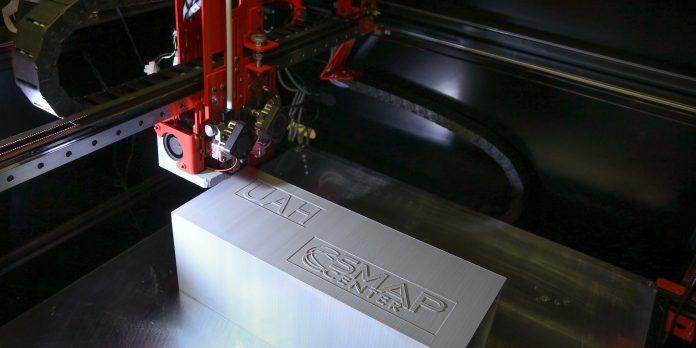HUNTSVILLE – Senior engineering design students at the University of Alabama in Huntsville, have created projects intended to encourage STEM outreach for middle and high school students, as well as advancing tracking technology aimed to enhance the traceability of assets such as autonomous rovers and satellites.
Two recent projects include crafting Doppler Radar Guns (DRGs) simple enough to be produced by middle and high school students, along with demonstrating a novel way to track an object using a special signal that doesn’t require computers.
Doppler project provides two solutions
For the first project, the goal was to design a task that involved an engineering build process that would be accessible to grade school students. The UAH Fieldable Radar Outreach Group, or Team FROG, decided to craft a device that would appeal to future engineers who have grown up with video game controllers in their hands. DRGs turned out to be the perfect fit for such a task, though the biggest challenge the team faced was fitting a single implementation to the various skill levels of younger students.
“This led to an elegant solution,” said Dennis Hite, a senior lecturer in electrical and computer engineering at UAH and team advisor. “Design two separate radar guns, one to be constructed around a radar module that would be simpler to build for a middle school kid, and the other would use the more advanced HB100 radar module, a version of DRG with a more involved implementation process, requiring an external amplifier circuit.”
The UAH Systems Management and Production (SMAP) Center dedicated funding to support the initiative.
Team FROG, led by Elijah Gay from the SMAP, included senior design class students Riley Carroll, Garrett Conner, Chad Lowe and Ethan Thoenes, all working toward undergraduate degrees in electrical engineering.
To make switching from one version of the DRG to the other more feasible, both designs emphasized shared design features and production steps. The team was able to create and successfully test both versions of the DRGs, and hopes to one day soon take the project on the road, leading outreach builds at area schools.
Building an untraceable asset
In scenarios where an asset must be tracked remotely, it is often difficult to acquire the position of the asset without also revealing the asset to adversaries, as is often the case with objects such as spy satellites, where having a beacon on the satellite risks revealing its position.
Team Beal-istic Missiles, consisting of electrical engineering design students Aiden St. Hilaire, Sidney Lovelady, William Current, Ethan Hoben and Patrick Natividad, advised by UAH Assistant Professor Aubrey Beal, tackled this problem by designing a system intended to demonstrate a new way to track an object by emitting a special signal.
Rather than a satellite, the team utilized an autonomous rover for the effort. “Our system is made of two main parts, a rover and a beacon,” said team project manager Ethan Hoben. “The beacon can be thought of as a speaker, and it emits a signal in the form of sound. The rover can be thought of as a person listening to the speaker, as the rover has two microphones similar to a person’s ears.
“The rover’s microphones listen for this specific sound that only the beacon can emit, which allows the rover to always follow the beacon, even if you move the beacon around.”
This method allows for the locating signal to be indistinguishable from atmospheric noise to adversaries, but still allows for quick acquisition for any receiver systems that have the matching filter. The system is entirely passive, meaning no computers are required to make it work.
“The real trick here is that the beacon emits a signal that can be thought of as a password, because only the beacon can produce this sound, and the rover is designed to only respond to that password sound,” Hoben said. “It can be likened to a GPS in that sense, as it allows our sensors to determine where the source of a signal is, thereby tracking it. This tracking is completed without any form of digital computation, resulting in quick beacon acquisition without dedicating computational resources.
“This technology would allow for a number of interesting applications, such as clandestine tracking of friendly assets, the aforementioned satellite applications, as well as hidden communications.”
Don’t miss out! Subscribe to our email newsletter to have all our smart stories delivered to your inbox.



